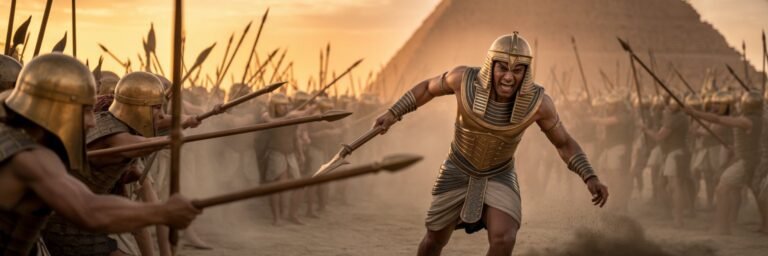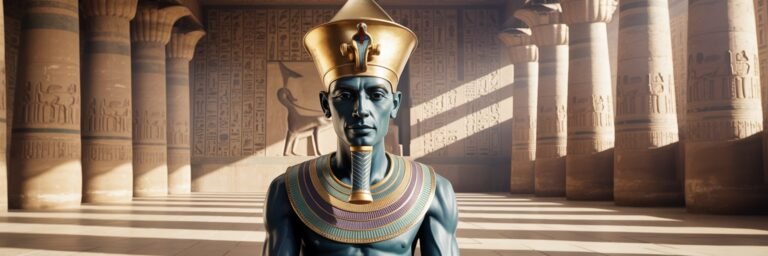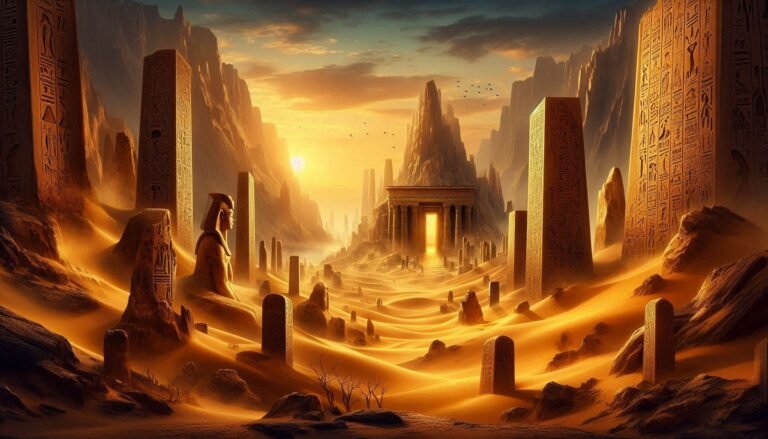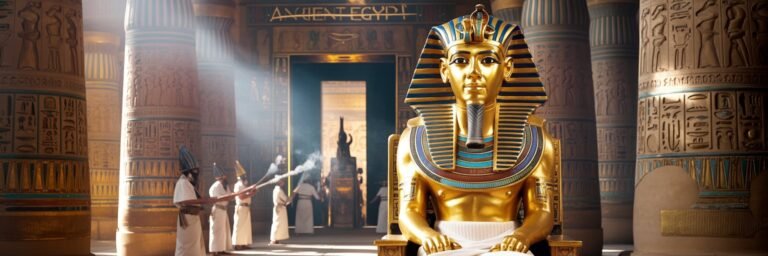For centuries, the mysterious symbols of Egyptian hieroglyphs remained an enigma, puzzling scholars and historians alike. Ancient Egypt’s vast history, religion, and daily life were all inscribed in a script that had become unreadable over time. That is, until one remarkable discovery in 1799: the Rosetta Stone. This single artifact became the key to unlocking the secrets of ancient Egypt, allowing historians to finally decode the language of the pharaohs.
The Enigma of Egyptian Hieroglyphs
Hieroglyphs were the formal writing system of ancient Egypt, used for over 3,000 years. The script consisted of intricate symbols that represented sounds, ideas, or entire words. However, after Egypt fell under Greek and later Roman rule, knowledge of how to read hieroglyphs was lost. By the time of the Middle Ages, Egyptian inscriptions were little more than mysterious markings on ancient monuments, with no one able to decipher their meaning.
Failed Attempts at Decipherment
For centuries, scholars attempted to unlock the meaning behind hieroglyphs, but many theories were incorrect. Early attempts often assumed that hieroglyphs were purely symbolic rather than phonetic. Some believed they held hidden mystical knowledge or secret messages, while others thought they were pictograms representing objects rather than sounds or syllables. It wasn’t until the discovery of the Rosetta Stone that a real breakthrough became possible.
The Discovery of the Rosetta Stone
The Rosetta Stone was discovered in 1799 by French soldiers during Napoleon Bonaparte’s campaign in Egypt. It was found near the town of Rosetta (modern-day Rashid), embedded in the wall of an old fort. The stone itself was a large slab of granodiorite, measuring about 44 inches (112 cm) high, 30 inches (76 cm) wide, and 11 inches (28 cm) thick.
What made the Rosetta Stone so extraordinary was that it contained the same text written in three different scripts:
- Hieroglyphic script – the formal, sacred writing of temples and monuments.
- Demotic script – the everyday writing used by common Egyptians.
- Ancient Greek – the administrative language of Egypt at the time of Greek rule.
Because Greek was still understood by scholars, it provided a bilingual key to decoding the hieroglyphic script for the first time in centuries.
The Race to Decipher Hieroglyphs
Following its discovery, the Rosetta Stone became the focus of intense study by European scholars. The two most famous figures in the race to decipher hieroglyphs were:
Thomas Young’s Initial Breakthrough
Thomas Young, a British polymath, made the first major breakthrough in the early 19th century. He identified that some of the hieroglyphic symbols represented sounds rather than whole words. He also noticed that certain symbols enclosed in ovals (known as cartouches) were likely the names of pharaohs. By comparing these cartouches with their Greek counterparts, he identified several royal names, including Ptolemy and Cleopatra.
While Young’s discoveries were significant, they were only the first step toward fully understanding hieroglyphs.
Jean-François Champollion Cracks the Code
The true decipherment of hieroglyphs came at the hands of Jean-François Champollion, a French linguist and Egyptologist. Champollion had a deep knowledge of Coptic, the language that descended from ancient Egyptian, and he used this knowledge to make a crucial breakthrough.
In 1822, Champollion successfully matched the hieroglyphic symbols to their corresponding Greek sounds. He demonstrated that hieroglyphs were a combination of phonetic symbols and pictograms, rather than being purely symbolic as previously believed. His work proved that ancient Egyptian was a spoken language with a phonetic alphabet, just like modern languages.
In 1824, he published his findings in a work titled “Précis du système hiéroglyphique”, officially unlocking the ability to read hieroglyphs for the first time in over a thousand years.
The Impact of Deciphering Hieroglyphs
The successful translation of hieroglyphs revolutionized the field of Egyptology and opened the door to understanding Egypt’s ancient history. Here are some of the significant impacts:
1. Understanding Ancient Egyptian History
With the ability to read temple inscriptions, tomb engravings, and papyrus scrolls, scholars could finally reconstruct the detailed history of pharaohs, battles, and daily life in ancient Egypt. The stories of famous rulers like Ramses II, Hatshepsut, and Akhenaten became clearer, as did the understanding of Egypt’s dynastic timeline.
2. Insights into Religion and Mythology
Ancient Egyptian religion was deeply intertwined with their writing system. The ability to read texts such as the Pyramid Texts, the Coffin Texts, and the Book of the Dead provided insight into Egyptian beliefs about the afterlife, gods, and cosmology.
3. Preservation of Literature and Science
Ancient Egyptian writings included medical texts, mathematical calculations, and even early literary works. The decipherment allowed scholars to study these early contributions to science, medicine, and literature, showing how advanced Egyptian civilization truly was.
4. The Growth of Egyptology
With hieroglyphs unlocked, the field of Egyptology rapidly expanded. Archaeologists could now properly document and interpret inscriptions on monuments, temples, and tombs, leading to an unprecedented understanding of the civilization that once ruled the Nile.
The Rosetta Stone Today
The Rosetta Stone remains one of the most famous artifacts in the world. Today, it is housed in the British Museum in London, where it draws millions of visitors every year. Egypt has repeatedly requested its return, arguing that it is a national treasure that rightfully belongs in an Egyptian museum.
While the debate over its ownership continues, the impact of the Rosetta Stone is undeniable. It provided the key to unlocking the mysteries of ancient Egypt, transforming our understanding of one of the world’s most fascinating civilizations.
Final Thoughts
The decipherment of hieroglyphs stands as one of the greatest linguistic achievements in history. Thanks to the Rosetta Stone and the brilliant work of scholars like Jean-François Champollion, we can now read and understand the writings of an ancient civilization that thrived for thousands of years.
The Rosetta Stone is not just a relic of the past—it is a bridge between modern scholars and the ancient world, allowing us to uncover the rich culture, history, and legacy of Egypt’s pharaohs, priests, and scribes. And as new discoveries continue to emerge, the story of ancient Egypt remains as captivating as ever.






